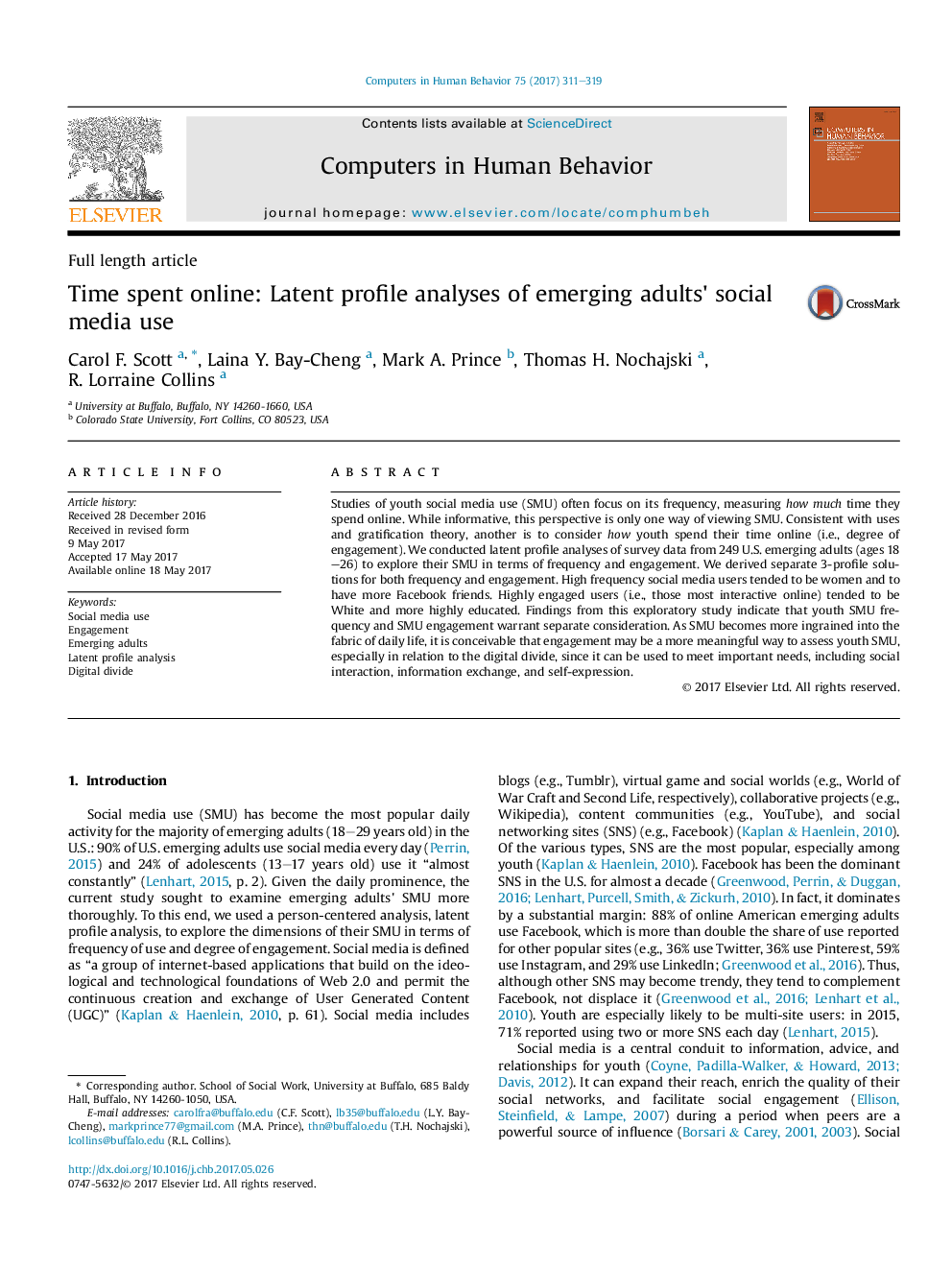| Article ID | Journal | Published Year | Pages | File Type |
|---|---|---|---|---|
| 4937502 | Computers in Human Behavior | 2017 | 9 Pages |
Abstract
Studies of youth social media use (SMU) often focus on its frequency, measuring how much time they spend online. While informative, this perspective is only one way of viewing SMU. Consistent with uses and gratification theory, another is to consider how youth spend their time online (i.e., degree of engagement). We conducted latent profile analyses of survey data from 249 U.S. emerging adults (ages 18-26) to explore their SMU in terms of frequency and engagement. We derived separate 3-profile solutions for both frequency and engagement. High frequency social media users tended to be women and to have more Facebook friends. Highly engaged users (i.e., those most interactive online) tended to be White and more highly educated. Findings from this exploratory study indicate that youth SMU frequency and SMU engagement warrant separate consideration. As SMU becomes more ingrained into the fabric of daily life, it is conceivable that engagement may be a more meaningful way to assess youth SMU, especially in relation to the digital divide, since it can be used to meet important needs, including social interaction, information exchange, and self-expression.
Related Topics
Physical Sciences and Engineering
Computer Science
Computer Science Applications
Authors
Carol F. Scott, Laina Y. Bay-Cheng, Mark A. Prince, Thomas H. Nochajski, R. Lorraine Collins,
